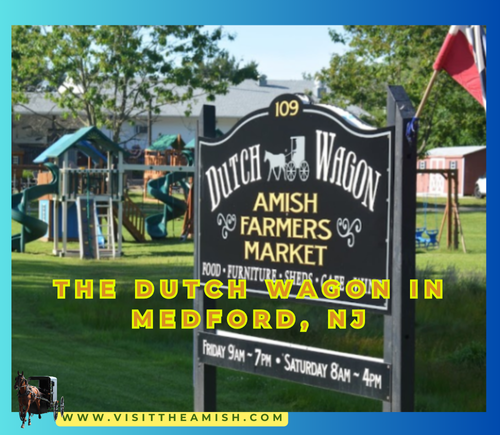Central Kentucky Welcomes New Amish Community: Tradition Thrives in the Bluegrass State
In the heart of Kentucky’s rolling hills, a new Amish community has taken root, bringing with it the values of simplicity, hard work, and faith. Located near Liberty in Casey County, this settlement of 20 families has quickly become a fascinating addition to the region’s rural landscape. Drawn by affordable farmland, a welcoming atmosphere, and the area’s rich agricultural heritage, the Amish have begun to establish farms and businesses that are already making an impact on the local economy.
“We were looking for a place where we could live peacefully and raise our families according to our beliefs,” said Bishop Eli Yoder, who leads the community. “Central Kentucky offers fertile land and a slower pace of life that aligns perfectly with our way of living.”
A Boost to Local Economy
The arrival of the Amish has brought economic benefits to Casey County. Their farming expertise and craftsmanship are contributing fresh produce, handmade goods, and unique services to the area.
One of the standout businesses is an Amish bakery that has quickly gained popularity among residents. Known for its pies, cookies, and freshly baked bread, the bakery has become a favorite stop for locals. “Their baked goods are incredible,” said Sarah Thompson, a resident of Liberty. “You can taste the care and effort that goes into every loaf.”
Another business making waves is a woodworking shop specializing in custom furniture. The shop’s handcrafted tables and chairs have attracted customers from across Casey County. “Their craftsmanship is unmatched,” said Tom Blackwell, owner of a nearby hardware store. “People are coming from all over to buy their furniture.”
The community has also begun selling fresh produce at local farmers’ markets and roadside stands. Their organically grown vegetables and fruits have been praised for their quality. “The tomatoes I bought from them were some of the best I’ve ever had,” said Michael Davis, a farmer in Liberty.

Local Businesses Welcome New Neighbors
Existing businesses in Liberty have embraced the Amish community’s arrival. Many see it as an opportunity for collaboration and growth. Farmers like Robert Smith have partnered with Amish families to share resources and expertise. “We’ve been trading hay and feed,” Smith said. “It’s a mutually beneficial relationship.”
The Casey County Produce Auction has also seen increased activity since the Amish began participating. Held twice weekly from April through October, the auction provides a platform for farmers to sell their goods directly to consumers. “The Amish bring high-quality produce that draws more buyers,” said auction organizer Mary Johnson.
Cultural Exchange and Community Integration
While the Amish prefer to live separately from modern conveniences, they have made efforts to integrate into the broader community respectfully. They’ve worked with local authorities to ensure their horse-drawn buggies can safely navigate public roads by adding reflective markings and lights.
“We’ve had productive conversations about road safety,” said Police Chief David Jones of Liberty. “Their cooperation has been excellent.”
The community has also participated in local events like farmers’ markets and craft fairs, showcasing their quilts, furniture, and baked goods. These interactions have fostered understanding between Amish families and their non-Amish neighbors.
“I’ve learned so much about their culture just by talking to them at events,” said Emily Carter, a resident who attended Liberty’s annual harvest festival. “They’re kind people with fascinating traditions.”
Challenges Faced by the Community
Starting anew in Central Kentucky hasn’t been without challenges for the Amish families. Adjusting to unfamiliar soil conditions has required them to adapt their farming techniques. “It’s different from what we’re used to back in Pennsylvania,” said Jacob Lapp, one of the farmers. “But we’re learning quickly.”
Navigating local regulations has also been a learning curve for the community. While Central Kentucky’s lack of zoning laws is appealing, some families have had to familiarize themselves with agricultural policies unique to the region.
Despite these hurdles, Bishop Yoder remains optimistic: “Challenges are part of life; they help us grow stronger as a community.”

Looking Ahead: A Promising Future
As word spreads about this new settlement near Liberty, both Amish and non-Amish residents express optimism about its future. The community plans to expand its businesses further while maintaining its focus on sustainable farming practices.
“We’re here to stay,” Yoder said confidently. “We hope to be good neighbors while preserving our way of life.”
Local officials also see potential in attracting tourists interested in experiencing Amish culture firsthand. Casey County Tourism Director Sarah Lewis remarked: “People love visiting Amish communities for their authenticity and charm. This settlement could become an important part of our tourism landscape.”
With its picturesque farms, bustling markets, and growing sense of community, Central Kentucky’s newest Amish settlement offers visitors a chance to step back in time while enjoying timeless craftsmanship and fresh food.
Address: Near South Fork Creek Road, Liberty, KY
Hours: Businesses operate Monday through Saturday; closed Sundays
Website: Information available through Casey County Tourism Office
Citations:
[1] https://www.amish365.com/where-are-the-amish-communities-in-kentucky/
[2] https://amishamerica.com/17-amish-businesses-map-kentucky-largest-community/
[3] https://amishamerica.com/amish-kentucky/
[4] https://explorelibertyky.com/amish-mennonite-shops/
[5] https://toddchamber.com/the-amish-experience/
[6] http://www.marionkentucky.org/amish/
[7] https://kygetaway.com/2021/10/14/amish-businesses-are-highlighted-in-new-map-produced-by-horse-cave-hart-county-tourism-kentucky/
[8] https://www.explorekywildlands.com/listing/amish-mennonite-shops/885/











